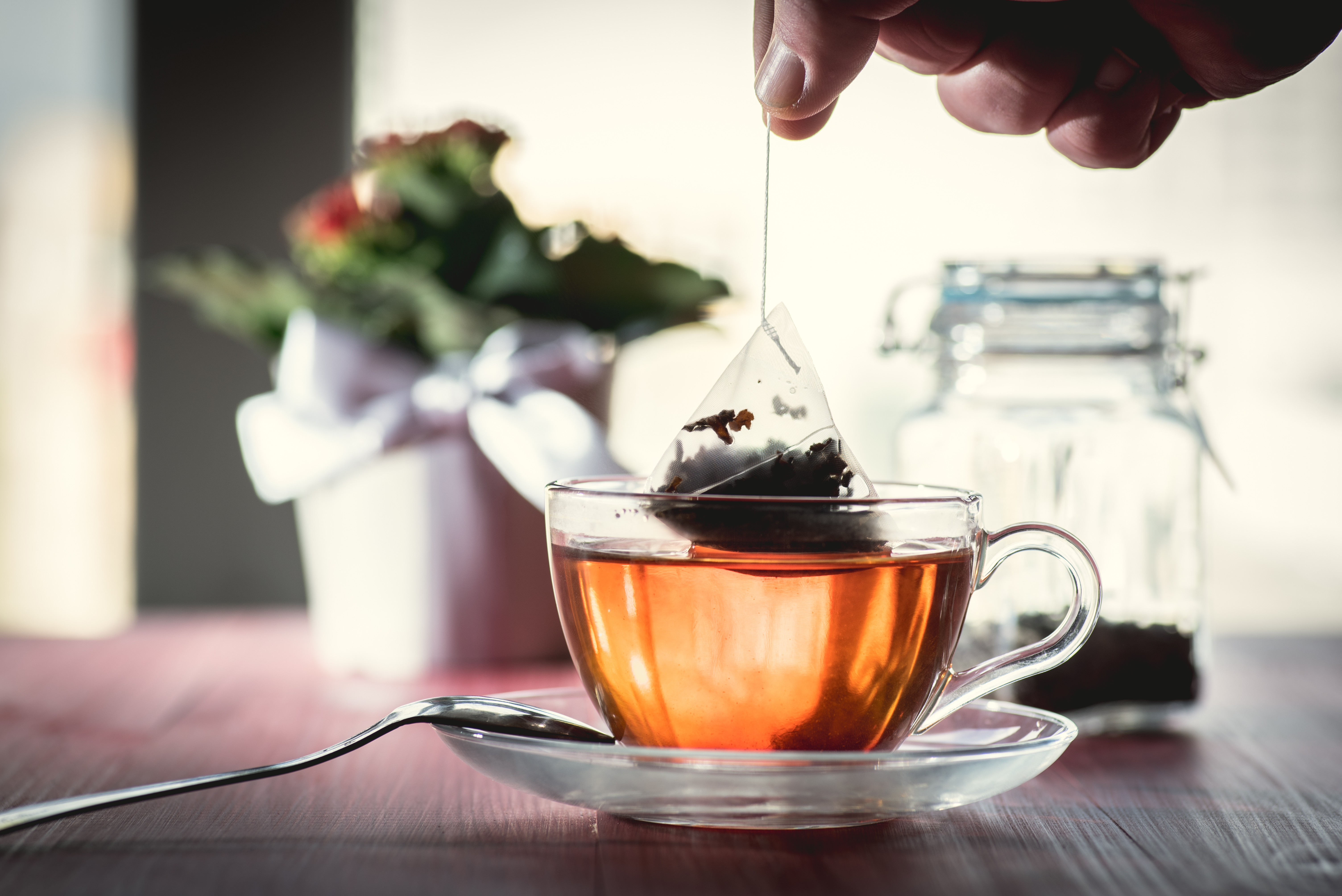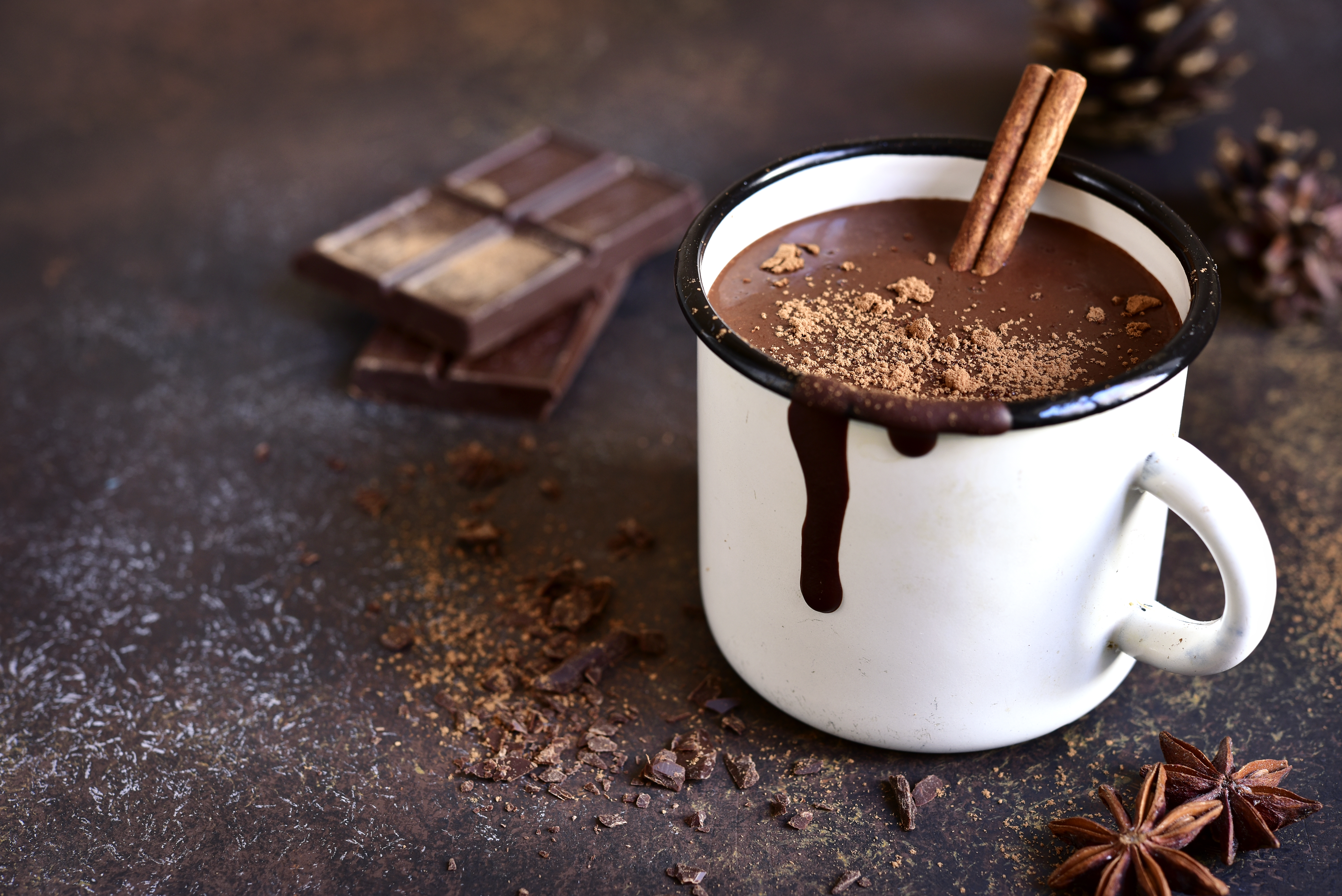Free digital copy
Get Speciality Food magazine delivered to your inbox FREE
Get your free copy
Innovation. Functionality. Boundary-pushing flavour profiles. If you want to up your game in the hot drinks arena this year, it’s time to boldly go where you might not have been before.
To look beyond bog-standard ‘builder’s tea’, cafetiere coffee, and dusty hot chocolate powders, and venture into what is proving to be a rather exciting time for this category, driven largely by consumer demand for ‘newness’.
Research from Mintel into hot drinks trends in the UK, demonstrates a desire for teas that aid anxiety, concentration and relaxation, with 77% of those asked agreeing they look to tea as a way to destress.
While 29% of Brits now have a coffee pod machine in their home, Mintel reports that 39% of coffee drinkers are trying to reduce their caffeine consumption.
And eco credentials appear to be incredibly important to shoppers too, with Mintel suggesting ethically-grown tea and coffee, and those brands sold in biodegradable, compostable or plastic-free packaging are more likely to tick boxes for savvy consumers.
In essence, the landscape for hot drinks is changing. It’s becoming more nuanced, with higher expectations on retailers to deliver a wider range of products that tick a growing number of boxes.
Surprisingly, recent research from consumer intelligence group, NIQ, showed tea consumers are more willing to experiment than coffee drinkers. Likened to the wine industry, there are many many flavour profiles to pick up in tea, across varieties from common black, to green, white, yellow, oolong, herbal, and exotic (and often expensive) pu-erh.
“Tea is big business,” says tea sommelier Candice Mason. “And even more so since the pandemic. The trend towards herbal wellness teas has grown significantly.” Candice has particularly seen increased interest in functional additions to tea, such as ashwagandha for stress, and turmeric for reducing inflammation.
Antioxidant-rich matcha tea, which also fits the ‘functional’ bill has seen a big rise in popularity in recent years too, NIQ found.
Retailers should be familiar with loose leaf tea, and while it remains a growing trend, especially as an affordable luxury, other formats are becoming available and should be considered. “Cold brews are becoming increasingly popular,” Candice says. “You can get really creative with tea. Think about the audience you have and what they might be looking for. If you’re a venue with a sober-curious audience, try cold brews and kombucha. If you’re a traditional afternoon setting, consider the quality of the Earl Grey and Darjeeling teas you offer and focus on the brewing experience.”

A whopping 92% of consumers say sustainability is important when choosing a brand today, according to NIQ, and the tea industry faces a several sustainability challenges.
One is the biggest issues is the use of plastics in tea bags. “One tea bag can contain up to 11.6 billion microplastics and 3.1 billion nano plastics! Around 96% of British tea is consumed in tea bags, and 36 billion cups of tea are drunk per year in the UK,” Candice highlights. Add these numbers up and you can see why industry is shifting towards compostable options.
As well as individual brands, the wider tea supply chain has historically faced numerous ethical question marks. “The industry doesn’t have a fantastic reputation for caring for their workers, however many sign up to schemes that support them with this, but it is something to be mindful of,” Candice says. “When purchasing your tea, check where they source their tea from, their ethical considerations and their sustainability. A good tea supplier will openly talk about this.”
Coffee expert and world coffee judge Amir Montazer says there are a lot of dynamic, exciting innovations happening in this sector...but adds retailers and cafes should be cautious of straying too far from what they know their customers like.
“The biggest trend in the last two years has been in the processing of coffee,” Amir says. “The way you do that affects the taste. There have been some more experimental methods like anaerobic fermentation, and carbonic maceration, adding more steps to the process.
“With anaerobic coffee they ferment the coffee cherry in water, sealed away from oxygen. That means producers can ferment it for a longer period, which gives more of a fruity taste to the bean – almost to the point where it doesn’t really taste like coffee anymore.”
Amir says this is not for everyone. Coffee made using this method accounts for less than 10% of his sales. “There is this thinking, especially around London, that if a coffee is fruity, it is a higher quality. But we’re having a lot of talk in the industry. Do we actually want our coffee to taste fruity? I don’t.”
If you’re seeking something a bit ‘different’, instead Amir advises talking to your coffee merchant or wholesaler about new varieties being grown in traditional coffee regions. “For example, six or seven years ago if you had coffee from Mexico, it would be a very ‘local’ coffee. But Mexico has changed a lot recently, and there are some really high-end new coffee varieties coming from there. The same in Panama.
“Something else that excites me is countries investing in speciality coffee. That usually means the farmers are more likely to get a better wage, and there is a better situation in terms of farming practices and labour.”
Amir points out a Kickstarter project he was involved with alongside not-for-profit organisation, Raw Material. “They went to the El Fenix region in Colombia and built a washed processing station. The problem with El Fenix was, because they didn’t have the stations before, they were processing using old-school methods. After that, the quality of what they could produce went up, and it helped them to sell coffee for a better price. It affected the whole region!”
When choosing coffee, Amir says not to lose sight of the at-home market, whether you are a café with some shelf space, or a retailer looking to maximise sales based on current trends. His advice is to make sure you have a very good selection of espresso. “More and more espresso machines are turning up in people’s houses. I find there are two kinds of people when it comes to espresso. Some want to simply press a button, and some want to spend a bit more time making coffee as part of their morning ritual. It is important to offer coffee that’s suitable for both.”
Mintel’s 2022 report on the UK coffee market indicates that now is the time to invest in the decaf segment of the market, with strong demand for decaffeinated products. Nearly 40% of coffee drinkers are reportedly trying to reduce their caffeine consumption, primarily driven by concerns over impact on health, sleep and emotional wellbeing.
Expect to see plenty of NPD in this market over the coming year, as well as caffeine-free coffee alternatives.
A new brand seeing exponential growth in this area is Noffee – a naturally decaffeinated hot drink made with chicory root, which is predicted by trendsetters to be the ‘next big thing’.
Founder Krishma Mehta has been inundated with interest over the drink, which is not only caffeine-free, but also naturally contains inulin – a prebiotic fibre known to be beneficial for maintaining a healthy gut.
Krishma, who has a background in accounting and finance, changed her diet during lockdown after suffering from insomnia, skin rashes, and other uncomfortable symptoms. She experimented making a coffee alternative at home with chicory root, which she could enjoy comfortably at the many many coffee mornings and play dates she found herself at with her two children. Krishma’s friends were intrigued. “Lots of them were going through peri-menopause jitters, anxiety, and inability to sleep.” After trying her chicory blend, without the ill effects they suffered from coffee, Krishma’s loved ones pushed her to form a business – and Noffee was born.
“I worked with an expert market roaster and tested different versions to see which tasted best, and which was most versatile,” she says. “I also did a lot of research into the impact of caffeine, and realised the market for non-caffeine products is high at the moment. It’s predicted to grow a huge amount by 2032.”
Noffee, says Krishma, has a caramelly, sweet taste, and represents part of a new wave of chicory drinks, setting its stall far apart from traditional, older varieties more known for a strong, often bitter flavour. “A lot of older brands are in a liquid form, and mostly used to make cakes. Our product, when you pour it out, looks and feels more like a coffee. The ground version was created to mimic coffee grounds in every way. And we have compostable pods, suitable for Nespresso machines too!”

It’s not just coffee machines that saw a surge in growth during the lockdown years. Retailers reported increased sales of hot chocolate shakers, and products such as Hotel Chocolat’s Velvetiser, and Smeg’s milk frother.
Premium hot chocolate brands suddenly became more visible, as consumers sought out comfort, looking for decadent options that included single origin and flavoured hot chocolate varieties.
“You can see changes coming from the high street,” says Cocoa Canopy’s Emma House of the exciting opportunities in this market. “Hot chocolate cafes popping up, the popularity of in-home milk frothers, and consumers seeking to create out of home drink experiences now in the home.
“We believe there is a new hot chocolate movement happening, and Cocoa Canopy is driving this, delivering innovation in a traditionally unloved category. Coffee and tea have been considered for years, so now it’s time for a choc shake-up.”
She adds that retailers have, “the power to bring newness to shelves and elevate hot chocolate.” Artisan markets need help with listings to be found, Emma says. “Consumers are used to the same big brands, taste profile, low quality ingredients and tired branding. I ask retailers to open their eyes to new possibilities, try something different, but know they can deliver a balance of quality and value.”